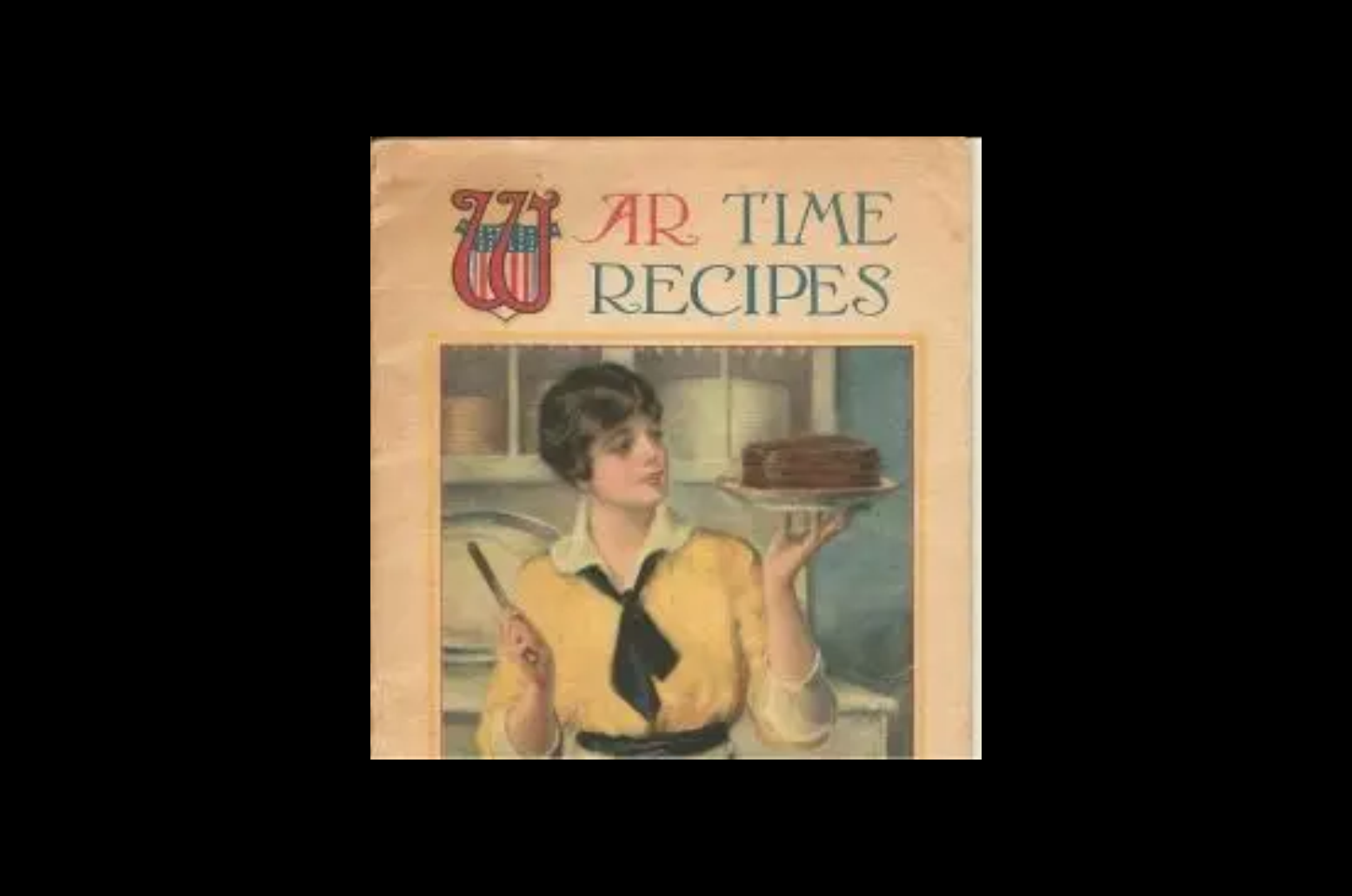Wheat-Free Baking From World War I: Helping the War Effort
Published: 15 January 2024
By Virginia Allain
via the Delishably web site

War Time Recipies block
Vintage World War I booklet entitled "War Time Recipes"
Gluten-Free Recipes From WWI

The back cover of the “War Time Recipes” booklet contains this quote: “Food will win the war,” by Hoover.
During World War I, the United States asked the “patriotic women of America” to cut back on the use of wheat flour. Wheat was urgently needed to ship overseas for the troops and for starving civilians in war-torn areas.
Recipes in magazines and in booklets like the one shown above offered alternatives to wheat flour for baking. Everything from cottonseed flour to dried pea flour was used by American housewives as part of their war effort. Wheat was the only grain that could withstand the long shipment time to Europe, according to the booklet.
“Food Will Win the War”
The photo above is the back cover of the “War Time Recipes” booklet shown at the beginning of this article.
What patriotic housewife could refuse the appeal to aid the war effort? Her mission was to substitute other flours for wheat flour. Along with this message, she was asked to minimize food waste.
Wheat Substitutes Used During WWI
- Bran
- Barley flour
- Corn flour, cornmeal, edible cornstarch, corn grits, hominy
- Dried pea flour, chickpea flour, white bean flour, soy-bean flour
- Rolled oats, oatmeal
- Rice, rice flour
- Potato flour
- Sweet potato flour
- Buckwheat flour
- Cottonseed flour
- Milo flour and meal
- Kafir flour and meal
- Cassava flour comes from a root and is widely used in Africa
- Carara flour
- Chestnut flour
- Kaoling comes from the sorghum plant.
- Peanut flour
- Banana flour
- Millet
- Dasheen comes from the taro plant and is used in the tropics.
- Feterita flour and meal were introduced in 1906 and 1908. It’s listed in this booklet as a substitute for wheat flour. It is derived from grain sorghum which grows well on the great plains.
- Middlings: I had to look this up on Wikipedia which says, “Wheat middlings (also known as millfeed, wheat mill run, or wheat midds) are the product of the wheat milling process that is not flour.” Apparently, it is a good source of protein, fiber, and other nutrients.
- Shorts: This is similar to middlings. As part of the milling process for flour, shorts and middlings are produced. The historic Old Stone Mill in Canada explained it this way, “Middlings & Shorts: this is the flour from our coarser screens (50 and 30 mesh) which contains the germ, coarsely ground endosperm, and some finely ground bran.” This would probably make a very high fiber bread.
Read the entire article on the Delishably web site.
External Web Site Notice: This page contains information directly presented from an external source. The terms and conditions of this page may not be the same as those of this website. Click here to read the full disclaimer notice for external web sites. Thank you.



